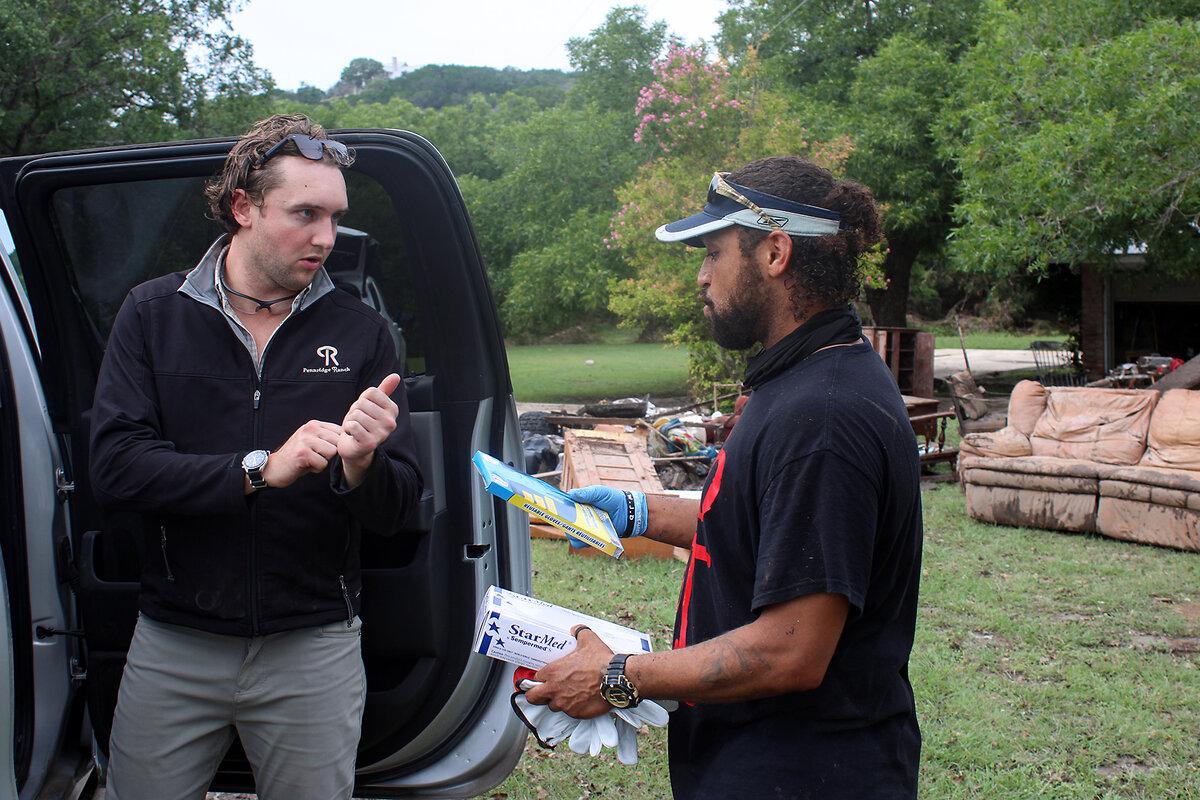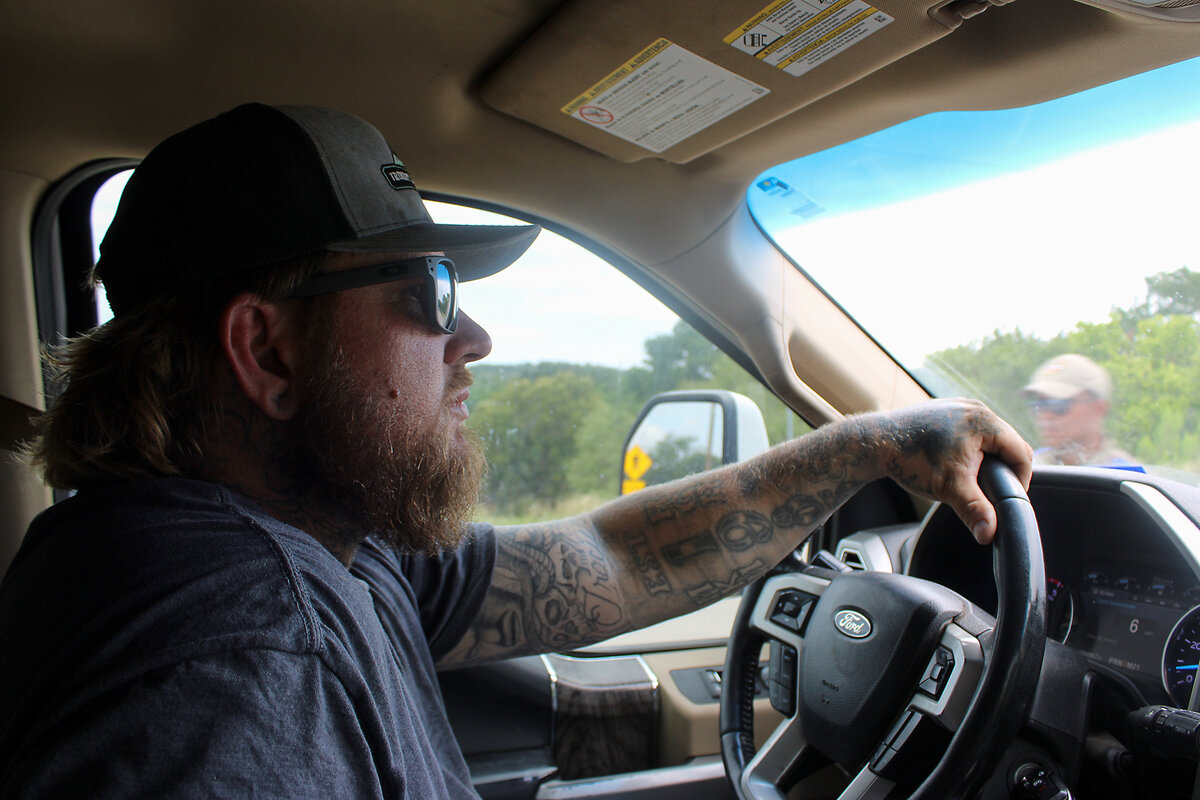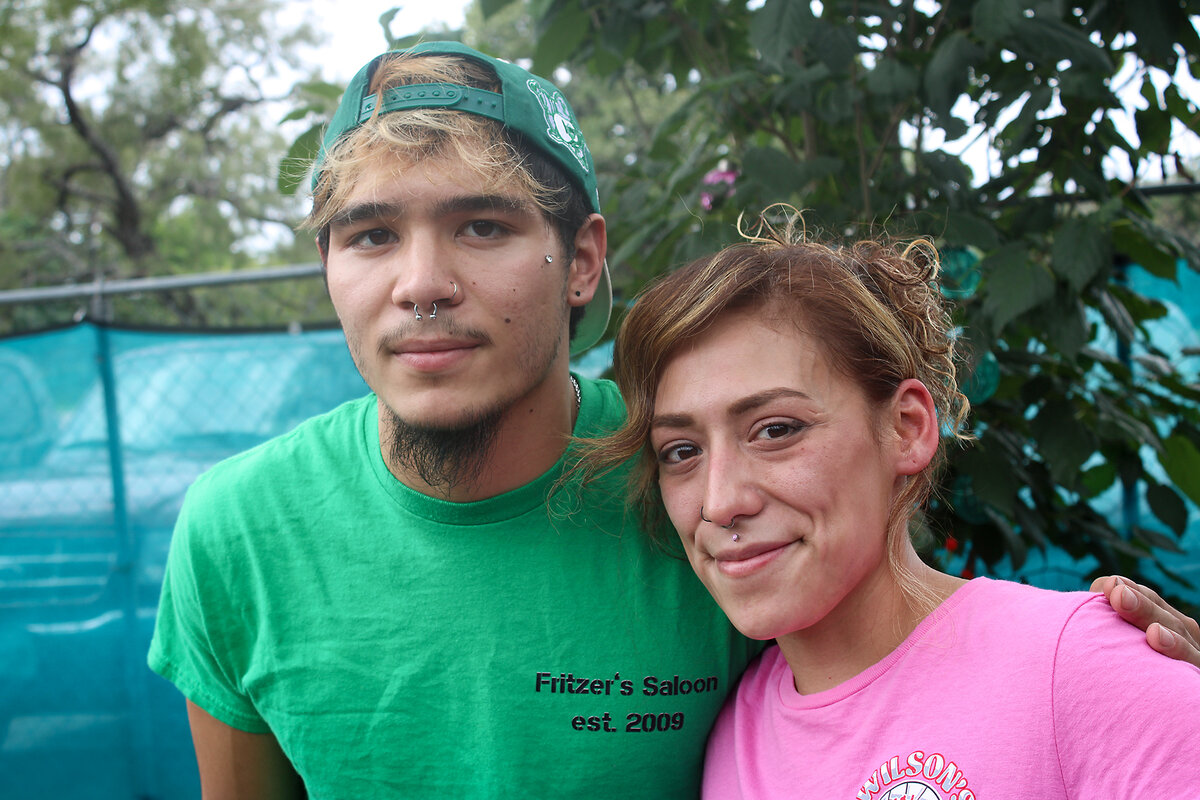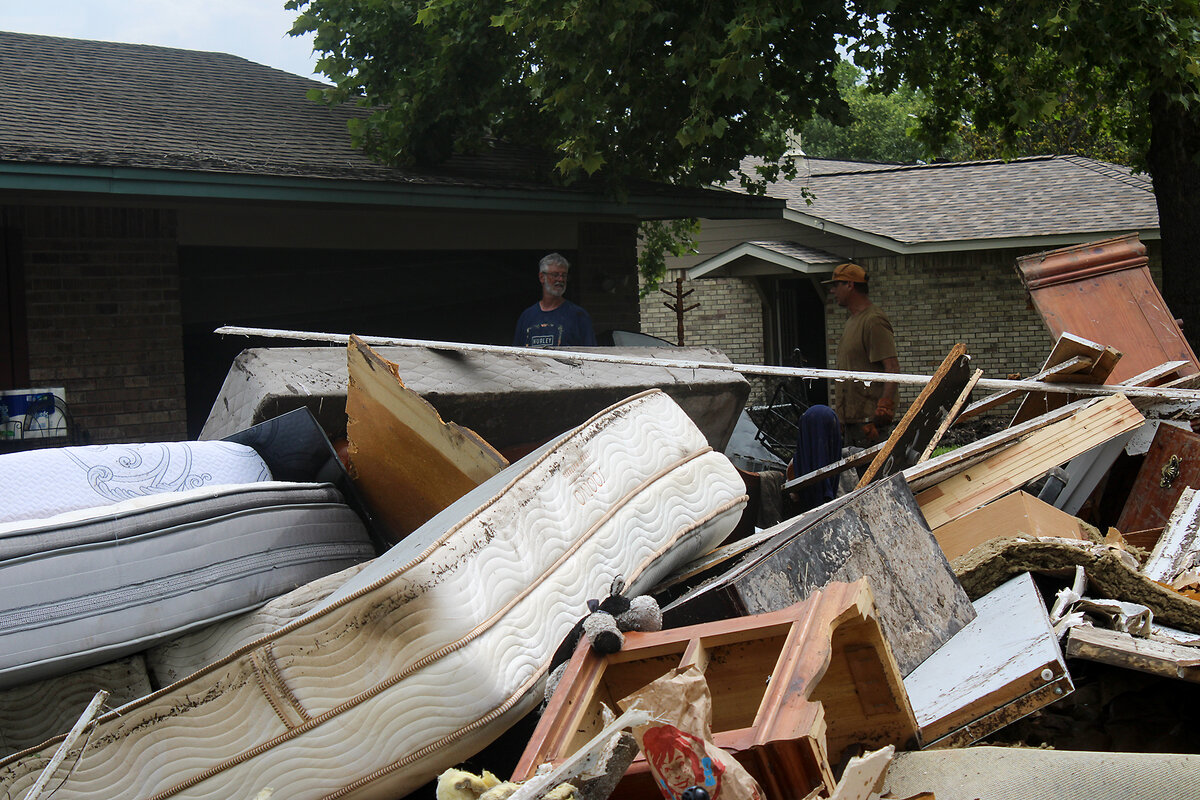‘This is Texas.’ Amid flood despair, locals mobilize to help.
Loading...
| Ingram and Kerrville, Texas
The floodwaters have receded, the sky is a sheet of gray, and Erik Muncy shakes his head. After more than two days helping the victims of a gruesome flash flood, he still can’t believe his eyes.
About 90 hours earlier, torrential rain had sent the Guadalupe River surging through this picturesque subdivision. Having been trapped in their homes and neck deep in water, residents now stand in inches of mud as they return to their houses. Their faces display a picture of lingering shock and confusion, surrounded by the waterlogged detritus of what had been their possessions.
But they still have their lives, residents echo in interviews. More than 100 deaths have been reported in Texas after torrential rain over the July Fourth weekend caused major flash flooding in the heart of the state. Kerr County, a rural area of about 54,000 people, has been the hardest hit. County officials have announced 87 deaths, including 56 adults and 30 children. Five campers and one counselor at Camp Mystic – a popular girls’ camp on the banks of the Guadalupe – remained unaccounted for as of Tuesday morning.
Why We Wrote This
Following catastrophic flooding in central Texas, residents are turning to one another for support. Efforts include launching donation drives and bringing supplies to hard-to-reach neighbors.
Mr. Muncy, driving a pickup truck full of cleaning supplies and electrolyte drinks, inches past the mounds of waterlogged possessions.
“These are people’s entire lives,” he says, resting a tattooed hand on the steering wheel. “People are literally throwing their whole homes away.”
But, he adds, “All of this is Texas.”
He’s talking about the people now, not the possessions. He’s talking about the two friends who are helping him deliver supplies to flood victims, about the friends and relatives helping gut the flooded-out homes, about the emergency responders still picking their way through miles of mud, debris, and flattened cypress trees as they enter the fifth day of search-and-rescue efforts.
The days have blurred together as residents of this scenic enclave – an escape into nature for generations of Texans – continue to process and recover from one of the deadliest natural disasters in state history. Locals have reached to their faith and their community – donating food, clothing, and time to those who lost more than they did – and corralled a heartwarming rush of donations from around the country and the world.
Kristina Hernandez has been averaging four hours of sleep a night since Independence Day. A bartender at Wilson’s Ice House in Kerrville, she has been helping turn the close-knit network of bars and restaurants in the area into impromptu donation centers.
On Monday afternoon, she’s helping organize clothes and food at Fritzers Saloon in Ingram. The night before, she had been cooking free meals for first responders. A combination of helicopters overhead, police and fire sirens, and adrenaline has kept her working 20-hour day after 20-hour day.
The donations have been so voluminous that her team has begun to turn its focus beyond the hardest-hit areas along the Guadalupe. Ms. Hernandez is helping take clothes and supplies to neighboring towns. Half the people stopping by for supplies escaped major flood damage, but they have lost critical paychecks because their workplaces washed away, or they’re struggling in the wake of minor flood damage.
“We have to think about the single parents, the single-finance households, the paycheck-to-paycheck folks,” she says.
Diapers and donation systems
Sitting at a shaded outdoor table, Ms. Hernandez lists the donations that have piled up at Fritzers, dropped off by locals: clothes, especially for older people; hygiene kits; wipes; water; diapers.
Courtney Johnson, sitting at a nearby table, perks up.
“Y’all really got diapers though?” she asks. She has three children, she adds, and she’s trying to potty train one. Pull-Ups would be ideal.
“I think I have some in my car,” Ms. Hernandez replies.
“I’ve given clothes,” says Ms. Johnson, “but it feels wrong to ask for help.”
Ms. Hernandez’s volunteer group has supplies for anyone who needs help, she says. The challenge is finding ways to match supplies with people who need them in the string of towns along this stretch of the Guadalupe River.
That sentiment is being echoed across the area. At a press conference Tuesday morning, Kerrville Mayor Joe Herring Jr. said the city is working on a new way to handle donations for the disaster response.
“We need a new system to handle the generosity of the world,” he said.
Deliveries in Bumble Bee Hills
Driving west along state Highway 39, Mr. Muncy and his two friends embody this challenge. The road is closed to regular traffic, so they maneuver their trucks – loaded with food, water, and cleaning supplies – past emergency vehicles and the wreckage of homes devastated by floodwaters. Debris is so thick that horses have become one of the more reliable modes of transportation to search for victims and survivors.
Once-towering cypress trees are bent in unison downstream, splintered and uprooted, prostrate before the cloudy sky.
Tree limbs protrude from the windows of abandoned homes. Blankets and towels, caught by floodwaters and tree branches, now hang dozens of feet overhead. Canoes and kayaks are folded around branches along the side of the road.
Mr. Muncy only met his co-volunteers – Frank Hoover and Jack Campbell – a week ago at a church men’s group, but since July 5, they’ve been driving supplies into the hard-hit neighborhoods along Highway 39. At first, he says, they couldn’t get through to deliver anything. The situation has improved somewhat since then.
“We have so many resources right now, but we can’t get it to where it needs to get to,” he says.
They make a stop in Bumble Bee Hills, a once-peaceful subdivision about 200 yards from the Guadalupe. Tall, green cypress trees usually obscure the river, but today it’s plain to see across a field of mud and fractured wood.
For residents, the river’s at a safer distance than it was over the past weekend.
David Sdearns is standing by a car, sipping water and watching volunteers help clean out his home. A few days earlier, he had walked out of it neck deep in water.
“But we’re alive, and that’s what counts,” he says.
A few hours later, Mr. Muncy is driving back to Ingram with his fellow volunteers. Their trucks are a little lighter, but the trip taught them that many of the supplies – like paper towels – are no longer needed. They need to swap some of that out for shovels, gloves, boots, and other cleaning supplies. They will keep making runs “however late we need to,” he says.
Overhead, the clouds are beginning to clear, and sunlight is shining down on a becalmed Guadalupe River. A flash flood warning is still in effect locally, but rains aren’t expected until the weekend.
If it does rain, it will alter search-and-rescue operations, Lt. Col. Ben Baker with the Texas Parks and Wildlife Department said at the Tuesday morning press conference.
“But it won’t deter us,” he added.









